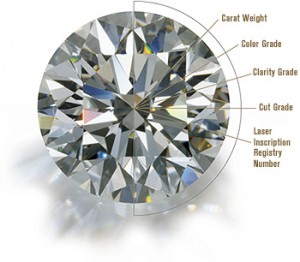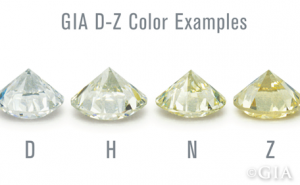Have you ever looked at a diamond and wondered why some diamonds are more attractive than others? While some are bright and flash with a rainbow of colors, others look dark and lifeless? These differences are all based on the cut and shape of a diamond. Cut grade fuels a diamond’s overall visual appeal in fire, sparkle and scintillation.
The light behavior within a diamond directly correlates to how well a diamond is cut. GIA recognized this relationship of a diamond’s cut and the quality of fire and the return of white light. Developing a grading system that quantifies specific measurements, angles, and percentages GIA was able to determine parameters that embody the best qualities in the cut of a diamond.
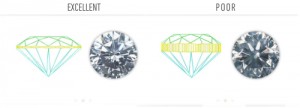
GIA began their 15 year study on the round brilliant by creating a computer model to examine light behavior within a diamond. Developing proportion-based metrics from this model they were able to predict a diamond’s performance on fire and brilliance. However, research proved that computer-based results could not be the only determining factor in judging a diamond’s overall brightness. After surveying industry leaders and general consumers, GIA created a foundation for the round brilliant cut grade.
When a cut grade is given, it is the component of brightness, fire, scintillation, polish, and symmetry, as well as durability and weight concerns. These are all an integral part that make up the GIA diamond cut grade system. With many different proportion combinations possible, GIA was able to determine the relationship of a stone’s interaction with light.
The reflection of light internally and externally in a diamond is called it’s brilliance. Fire is the dispersion of spectrum colors you see when light hits the diamond. The pattern of light and dark areas and the flash of light that emits when a diamond is moved is called scintillation. A well cut diamond will attribute to these three desired qualities because it directs more light through the top of the stone. A poor cut will appear dark because light is exiting through the bottom of the stone if it is too deep or too shallow.
Diamond cut is often confused with its shape. Round, used in most diamond jewelery, is the shape of a stone. All other shapes are classified under fancy shapes. Evaluated only on polish and symmetry, fancy shapes do not receive a cut grade like the round brilliant. These grades are valued ranging from Excellent to Poor.
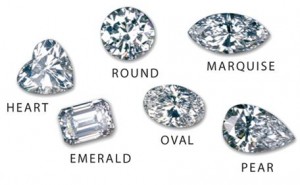
Polish is rated on the overall surface condition of a diamond’s facets. It is the result of the polishing process and blemishes created after cutting. These grades are given to a diamond when viewed under 10X magnification. An Excellent or Very Good may have minute or minor features that can only be seen with the aid of a microscope. Anything Good or lower can affect the appearance of a diamond and may be seen by the naked eye.
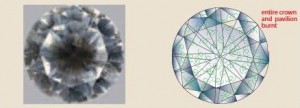
Symmetry is the exactness of shape and placement of the facets. It is subdivided into two types of features, proportion-related and facet-related. These grades are also performed under 10X magnification for its initial face-up impression and profile view. Both angles are evaluated because of the three dimensional nature of a diamond; one symmetry feature can be linked to others. Similar to polish, grades given Good or lower can have symmetry features that are noticeable to the unaided eye.

Understanding GIA parameters for each grade and the specific guidelines they represent, Knox Jewelers recommends fancy shapes to be Good or Better. With almost 30 years of industry experience, we have found that the beauty of a diamond is greatly reduced when selecting polish or symmetry below this standard. A diamond that contains Good or Better qualities enhances the elegance of a handmade Knox custom design.
The care and craftsmanship that goes into each ring is harmonious to the quality of diamond a customer chooses. As the focal point, a diamond captivates the attention with its radiance of sparkle and luster. Selecting a well cut stone to compliment a Knox diamond engagement ring is a timeless expression of love, forever evoking a sense of glamor and romance.

